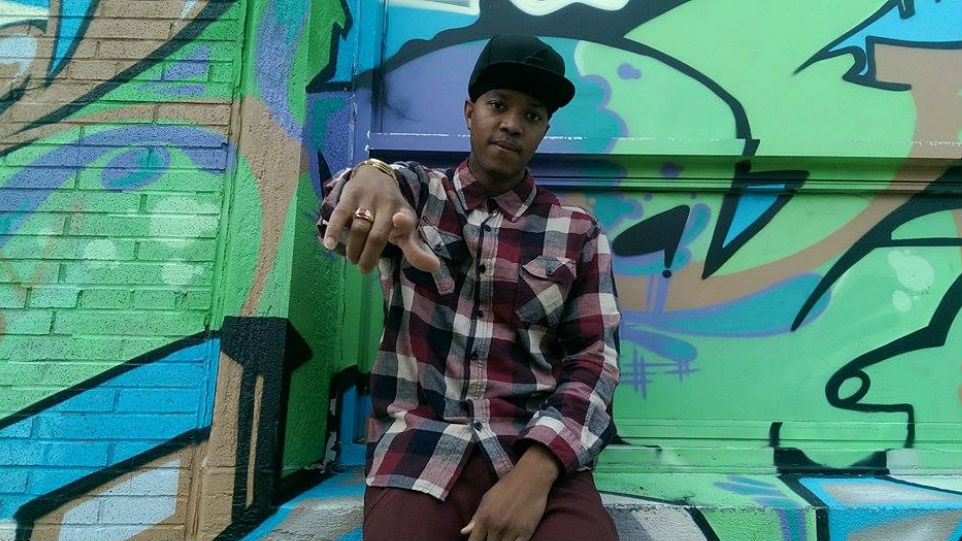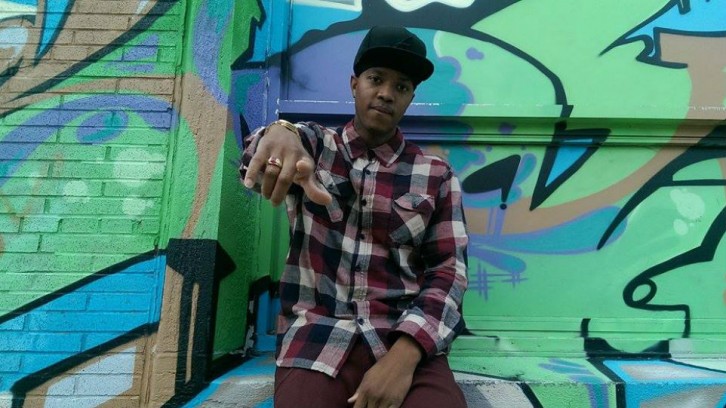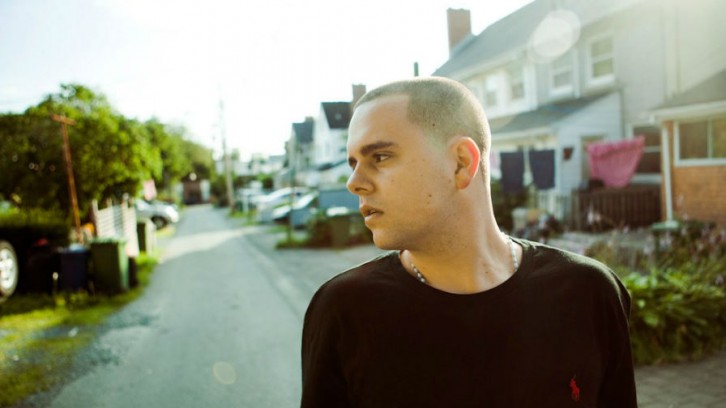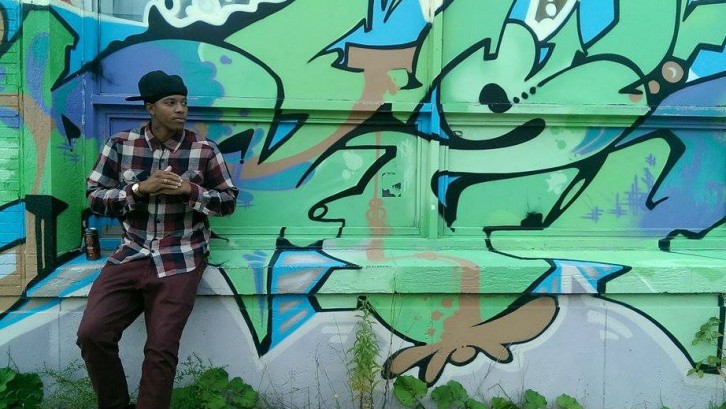Music
Not hearing hip hop? ‘You’re not looking in the right place’
Rap artists face struggles in gaining a national reputation locally as well as outside of Nova Scotia.

caption
Rapper Thrillah started rapping at the age of 10 and began taking it seriously in high school.
caption
Daniel Kane, a.k.a. Thrillah, started rapping at the age of 10 and began taking it seriously in high school.This isn’t Harlem, Compton, Atlanta or Detroit — it’s Halifax, N.S., but this small Canadian province shares one thing in common with these major American cities: a strong and growing community of rap and hip-hop artists.
Hip-hop’s reputation in Nova Scotia
Halifax rapper Matthew Arab, a.k.a Quake Matthews, had just arrived in Atlanta for the A3C festival, an event that unites a variety of hip hop artists across North America. As he went through security a young woman asked him what what kind of music he listened to “down there” in Nova Scotia.
“She looked at me like I had 10 heads,” said Arab. “I knew she’d be shocked if I told her I was a rapper.”
That’s how he sometimes feels even in Halifax.
“There’s a lot of talent here in Halifax and it’s underestimated,” he said.
Melissa MacMaster, director of Buds Entertainment Inc., works with emerging hip-hop artists and helped organize this trip along with Halifax-based TMG Entertainment to expose Nova Scotia hip-hop artists to more networking opportunities.
“You can have a set of Atlanta artists and if you weren’t watching the stage it would sound like the same performer for the whole set, but with a Nova Scotia artist [on the bill] you can tell the difference because they have unique energy,” said MacMaster.
Rapper Classified from Enfield, N.S., has found fame on a national level, even opening shows for major artists like Snoop Dogg. But the common misconception still exists: these are rare gems in a nation mostly popular for other genres, such as EDM and pop music.
The ‘radio formula’
Twenty-seven-year-old hip-hop artist Daniel Kane, a.k.a Thrillah, feels that although the hip-hop community is not lacking members, it is still disadvantaged when it comes to public exposure.
“We don’t get enough play on the radio and music stations. It’s more pop and it’s hard to get recognized. Everyone thinks we all rap like Classified, but no one will realize our talent locally until we have an actual radio station playing our music so it can get around,” said Kane.
Thirty-five per cent of music played on Canadian Music Radio Stations must be Canadian content, but that doesn’t necessarily mean local hip-hop music. CKDU, an independent radio station which broadcasts from Dalhousie University, is known for supporting local music.

caption
Quake Matthews hopes to drop a new album by spring.Ryan Somers, a.k.a R$ $mooth, a prominent figure in the hip-hop and rap community, has a three hour hip-hop show called $mooth Groove$ on CKDU, which, according to station director Russell Gragg, lights up the request lines.
“Commercial stations are not programming music for the listener, but for the advertisers instead,” said Gragg of the lack of diversity. “Media companies based in other provinces mean the stations “all have the same playlists.”
Emerging rap artists and a rich history of hip-hop set Nova Scotia apart from the rest of the Maritimes. Black Nova Scotia rappers built a network in the U.S. expressing similar political and personal struggles through their rap and although the community has evolved since then, it is alive.
Arab says the messages expressed in the popular radio formula affect the messages expressed in music younger artists are making when trying to make a name for themselves.
“They might think, ‘Oh so if this is what makes it on the radio, I have to sound like this,’” he said.
Arab’s music is therapeutic for him and his last four albums include a variety of topics, from club music to personal and social struggles. Although themes of drinking and sex are what end up in the mainstream, he says he is not the only one discussing more substantial themes.
“If you say it’s not there, you’re not looking in the right place. Don’t form an opinion just from what (commercial radio stations) show you. There are tons of artists that stand for something, including myself,” said Arab.
Gearl, a member of City Natives, an award-winning Aboriginal hip-hop group from the Maritimes, is an example, saying, “Everything on your shoulders we spill it on to a beat.”
Twenty-year-old rapper Certi who grew up in Dartmouth also expresses more intense themes in his lyrics.
“I talk about what I see and what I’ve seen growing up so it plays a big role in my music, from the drugs to murder and violence,” said Certi.
Arab’s lyrics on a song called ‘We can do better,’ featuring Philadelphia rapper Freeway, show his anti-gun violence theme.
Opportunities and venues for local hip-hop artists
Arab, now 26, made a name for himself at the age of 15 competing in rap battles, something that Halifax has seen less of in recent years. Although there are opportunities available for local hip-hop artists to showcase their talent, it’s not enough.
Local rap artist Martez Wiggins (a.k.a Woozy Blanks) started R.A.W. Cypher Nights more than a year ago at Alteregos café in the north end of Halifax, which is already a rap hub for artists and fans. His goal was to get artists together to perform and be heard.
Julie Hutt, an employee at the café who works the bar during the cypher nights, says hip hop is under-represented.
“Halifax is a city with a lot of open mics, but then how come there isn’t too many of those for hip-hop compared to other genres and styles of music? They have more venues and it’s kind of disheartening,” said Hutt.

caption
Thrillah is an independent artist but is part of a team called Our Dynasty Our Destiny a.k.a ODODFemale rappers are disproportionately affected by the lack of opportunities. Shavonté Parsons, who goes by Shevy Price, was the only female hip-hop artist performing at the A3C festival from the Canadian set.
“We are always excluded. There has to be a female cypher or a female showcase. It’s always like ‘let’s chuck females in this’. We aren’t mixed very well with the males,” said Parsons.
Parsons says this is a sad reality in North America, where multiple female rap artists can’t shine in the industry at once like the days of Missy Elliott, Eve and Lil Kim. Now there is only room for one female hip-hop artist at a time and Nova Scotia is no exception.
Nova Scotia’s funding advantage
One advantage that hip-hop artists do have in Nova Scotia is funding. There are multiple grants and funding opportunities for emerging artists, which they can access from the province and through Music Nova Scotia such as the Bringin’ It Home program. Arab says much of his career has resulted from this funding. It’s something MacMaster says artists “are fortunate to have here in Nova Scotia.”
Although many local hip-hop artists feel the community undervalues their talent and presence, they all agree that if one is determined enough it is possible.
Kane says that even if some events aren’t big enough “you can still build a fan base.”
Parsons adds, “You have to put a lot of ground work and a lot of people don’t understand that – other things just guide you.”.
Other than the help of funding, the guidance is available here. One of them is TMG Entertainment, a management team in Halifax that helps many local hip-hop artists with aspects of their career from recording, promotion, to booking – even helping artists who aren’t signed to TMG.
“There aren’t enough venues for hip-hop artists to play in comparison to Toronto — which has tons. So to get them out there we help them with marketing themselves and handling the business side more,” says Tony Makhoul, owner of the company.
Arab, along with his hip-hop peers appreciate their foundation in Nova Scotia, but most say the ultimate success is found outside this city’s small walls.
“I wish I could stay here, but I don’t want to be stuck on the top of a local list. I want to move forward and try to build something bigger,” said Kane.


B
Ben